Abstract
Under various feedback conditions, 38 college undergraduates were asked to rearrange abstract graphic characters on a computer screen, placing them in arbitrarily designated “correct” sequences. Two sets of seven horizontally arrayed stimuli were used. In Experiment 1, subjects in Group 1 learned to arrange the first set under Selection Feedback in which a “+” appeared above each character after it was selected in the correct order and to arrange the second set under Order Feedback in which a correct response produced a copy of the character in its correct ordinal position at the top of the screen. For Group 2 the order of these conditions was reversed. In Experiment 2, for subjects in Group 3, correct responses produced neither of these types of feedback. Subjects in Group 4 received Order Feedback only until the first set was correctly ordered once. Order Feedback was more effective than Selection Feedback during initial acquisition of the first set but not during maintenance; no differences were found for the second set. Only 2 of 9 subjects successfully put the characters in correct sequential order under the No Feedback condition. When, in Experiment 2, Order Feedback was eliminated after the first correctly arranged sequence, the steady-state criteria were met more slowly than in Experiment 1.
Keywords: feedback, sequential ordering, sequential behavior patterns, human adults
Full text
PDF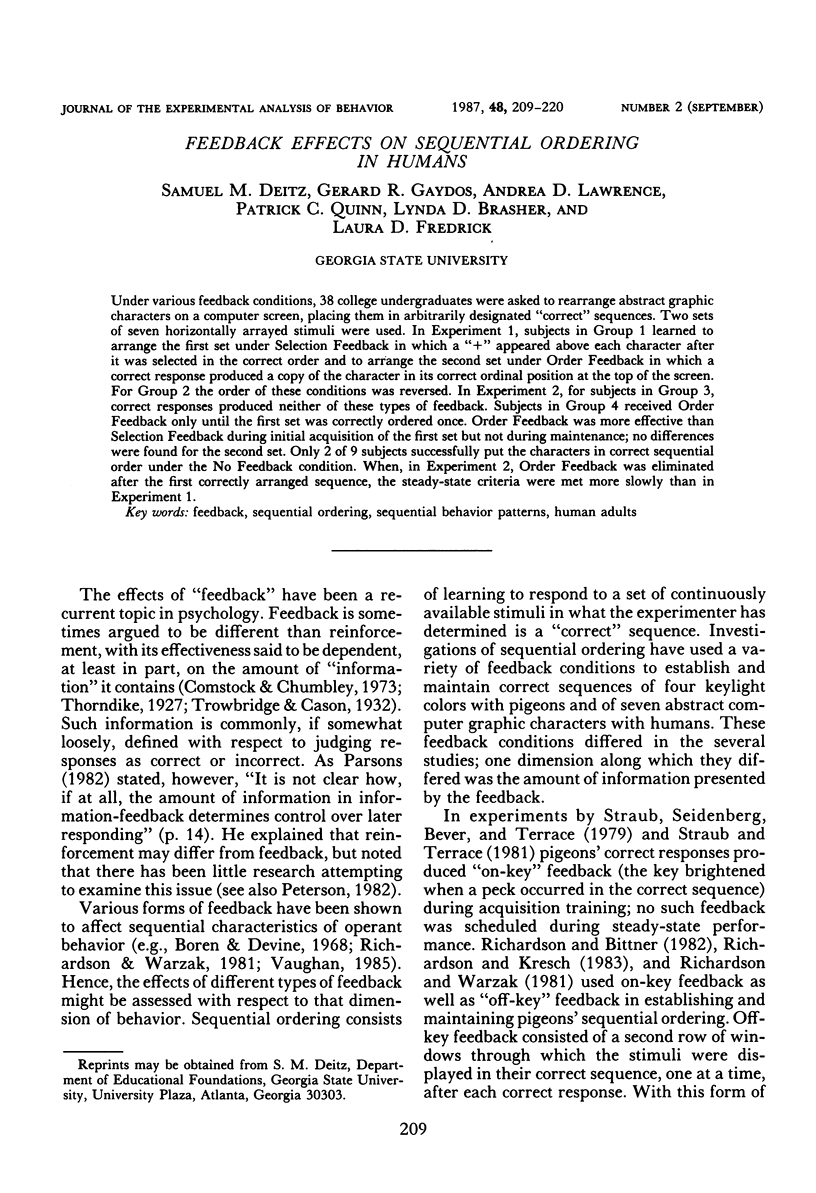
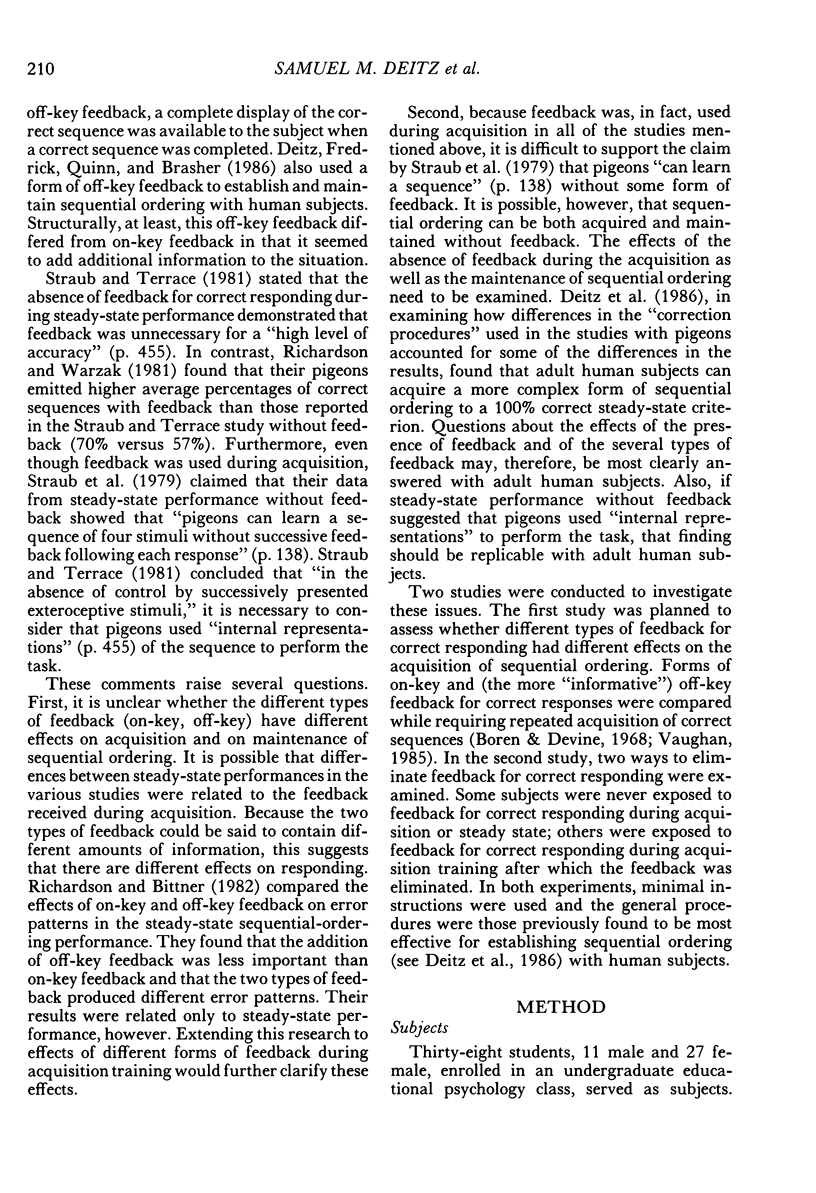
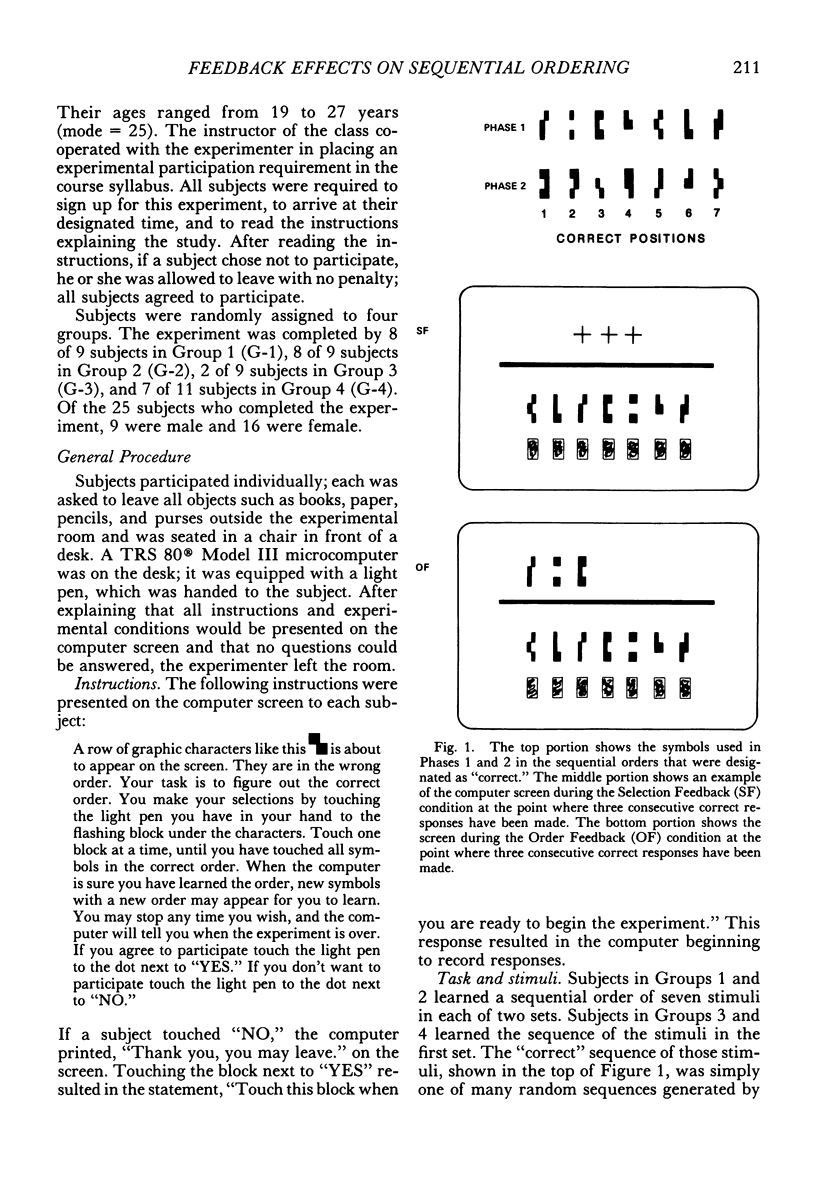
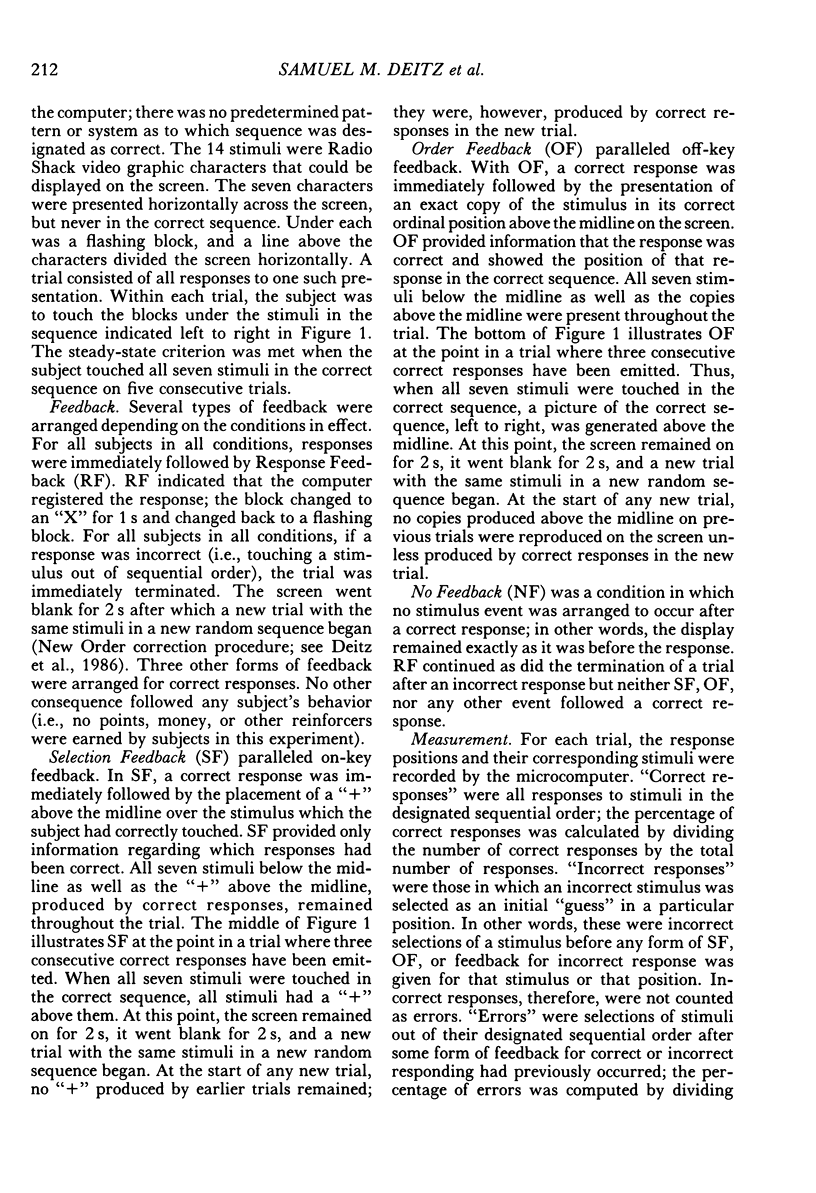
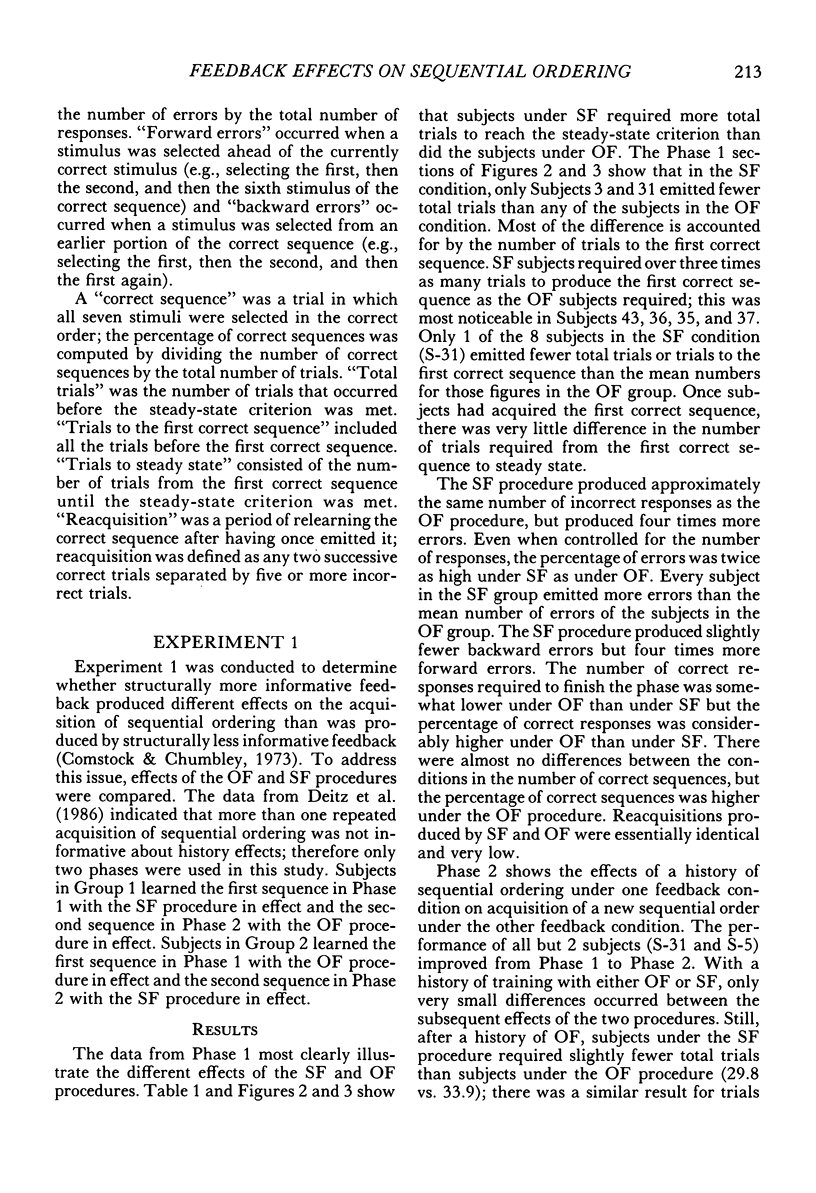
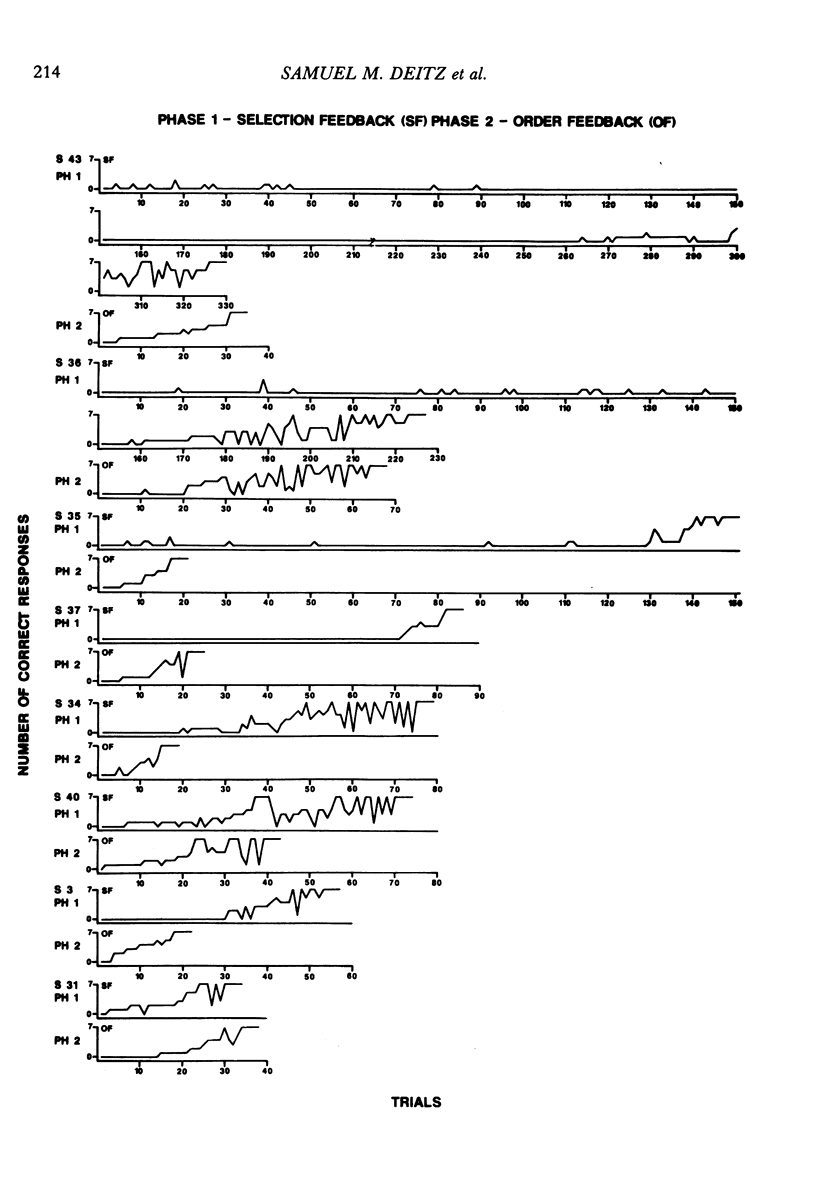
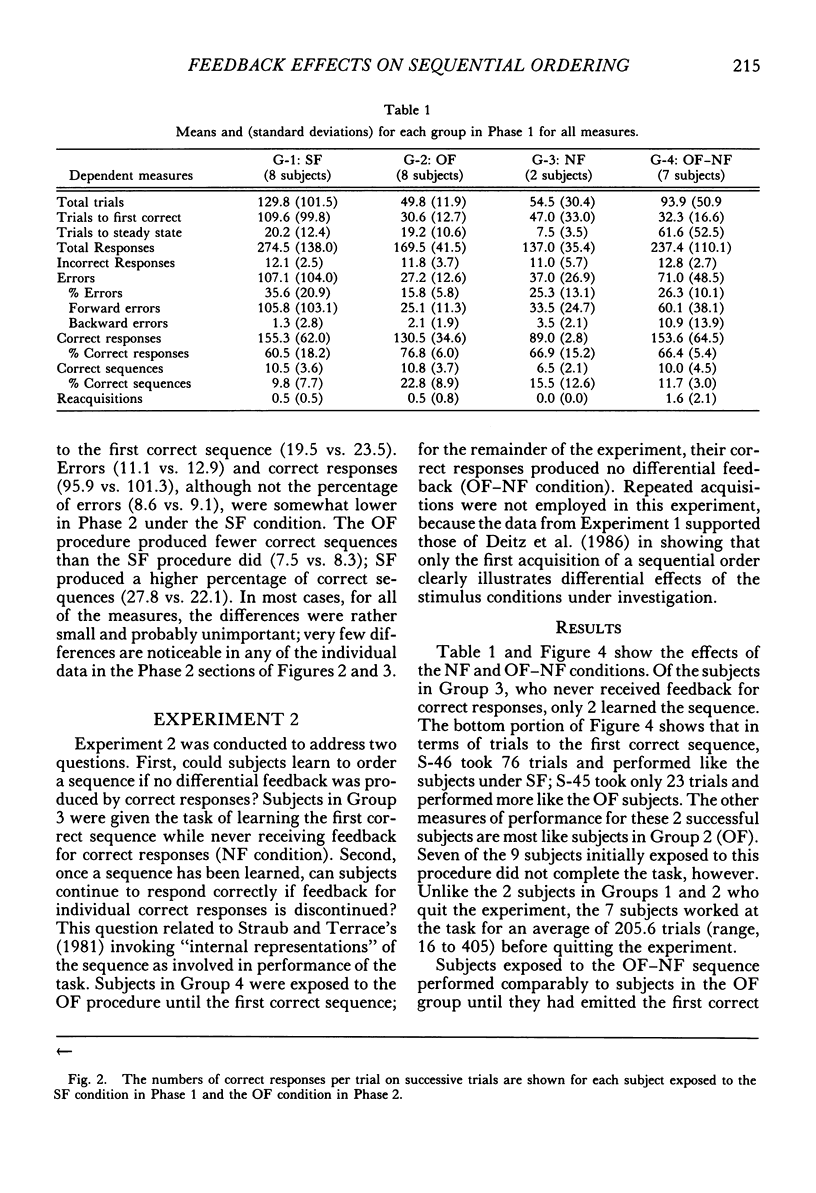

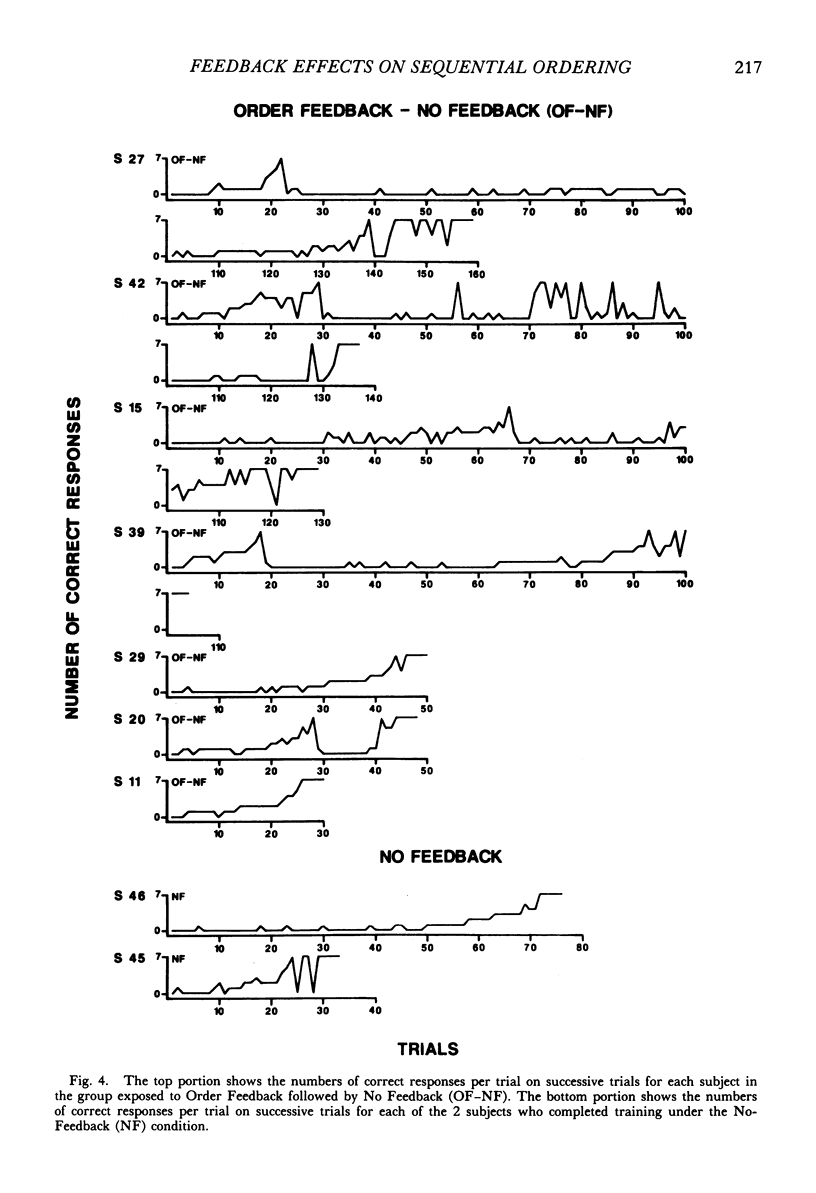
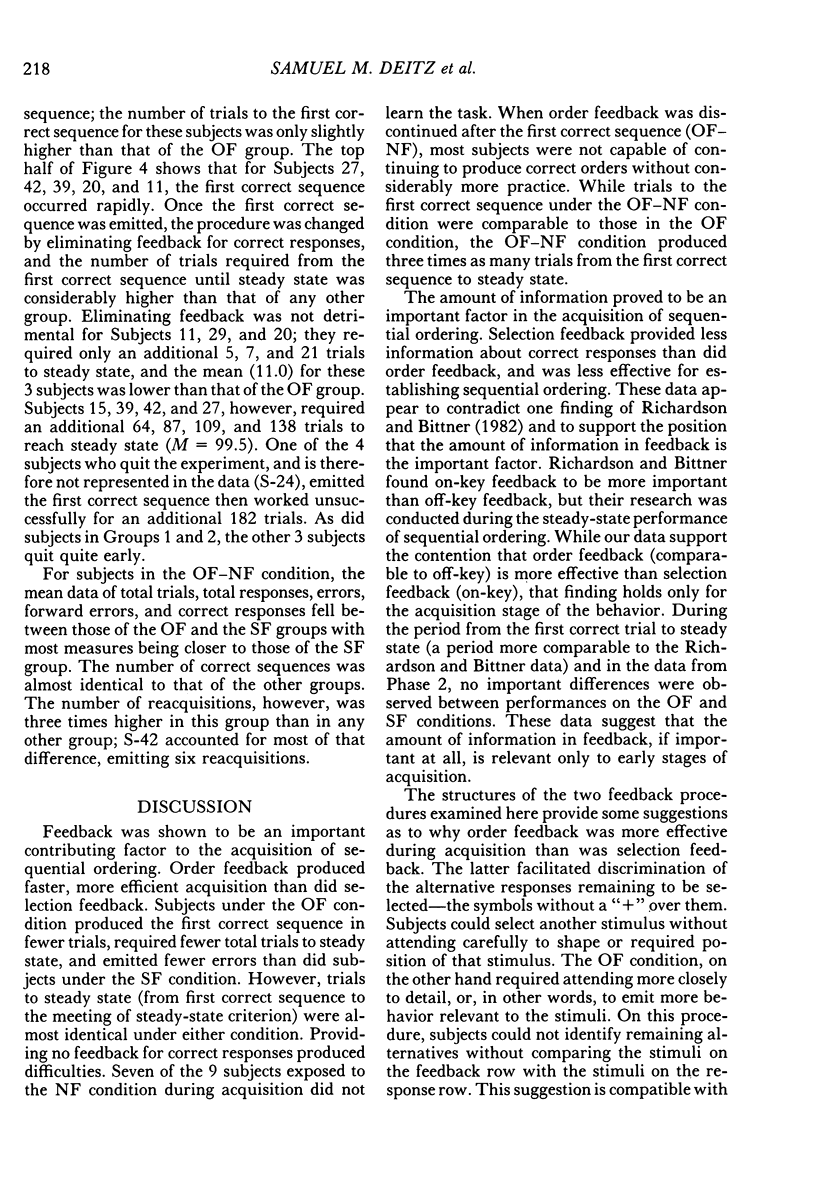

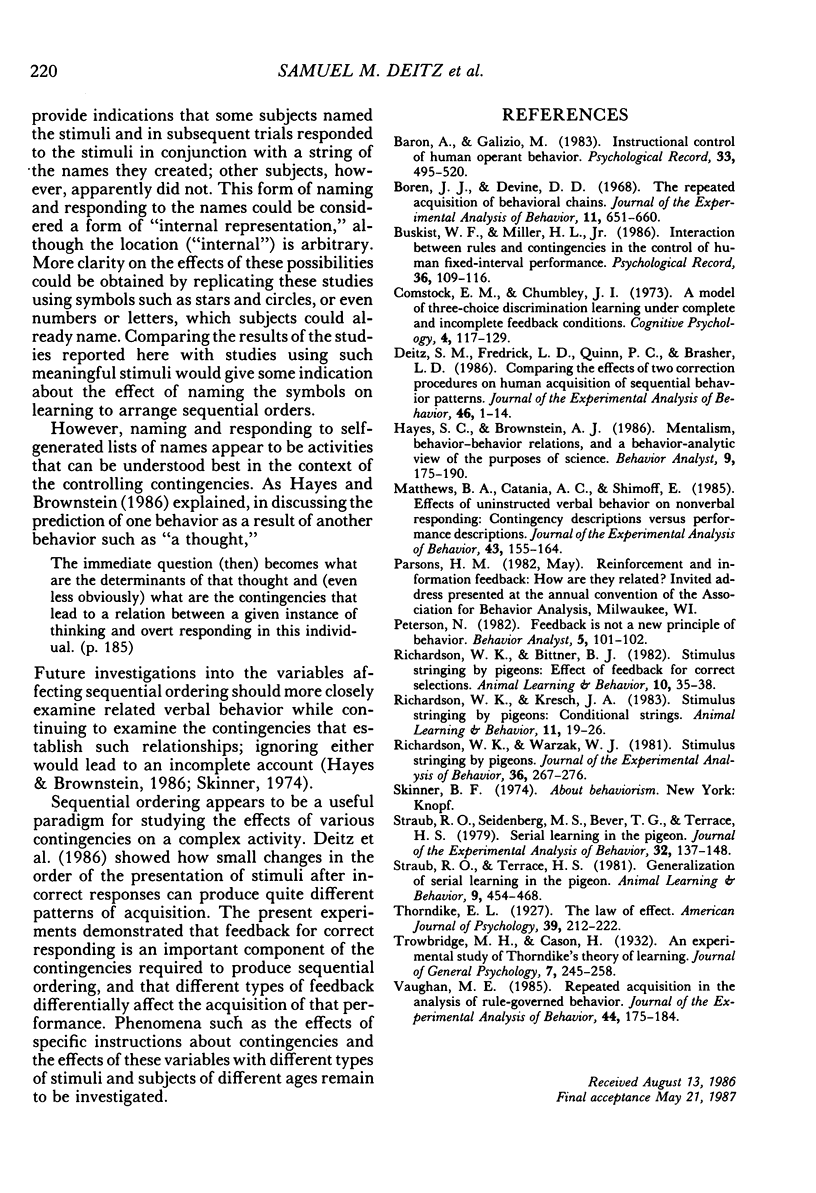
Selected References
These references are in PubMed. This may not be the complete list of references from this article.
- Boren J. J., Devine D. D. The repeated acquisition of behavioral chains. J Exp Anal Behav. 1968 Nov;11(6):651–660. doi: 10.1901/jeab.1968.11-651. [DOI] [PMC free article] [PubMed] [Google Scholar]
- Deitz S. M., Fredrick L. D., Quinn P. C., Brasher L. D. Comparing the effects of two correction procedures on human acquisition of sequential behavior patterns. J Exp Anal Behav. 1986 Jul;46(1):1–14. doi: 10.1901/jeab.1986.46-1. [DOI] [PMC free article] [PubMed] [Google Scholar]
- Matthews B. A., Catania A. C., Shimoff E. Effects of uninstructed verbal behavior on nonverbal responding: Contingency descriptions versus performance descriptions. J Exp Anal Behav. 1985 Mar;43(2):155–164. doi: 10.1901/jeab.1985.43-155. [DOI] [PMC free article] [PubMed] [Google Scholar]
- Richardson W. K., Warzak W. J. Stimulus stringing by pigeons. J Exp Anal Behav. 1981 Sep;36(2):267–276. doi: 10.1901/jeab.1981.36-267. [DOI] [PMC free article] [PubMed] [Google Scholar]
- Straub R. O., Seidenberg M. S., Bever T. G., Terrace H. S. Serial learning in the pigeon. J Exp Anal Behav. 1979 Sep;32(2):137–148. doi: 10.1901/jeab.1979.32-137. [DOI] [PMC free article] [PubMed] [Google Scholar]
- Vaughan M. E. Repeated acquisition in the analysis of rule-governed behavior. J Exp Anal Behav. 1985 Sep;44(2):175–184. doi: 10.1901/jeab.1985.44-175. [DOI] [PMC free article] [PubMed] [Google Scholar]


